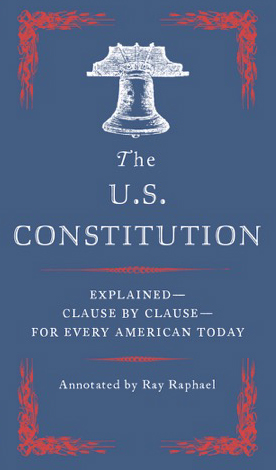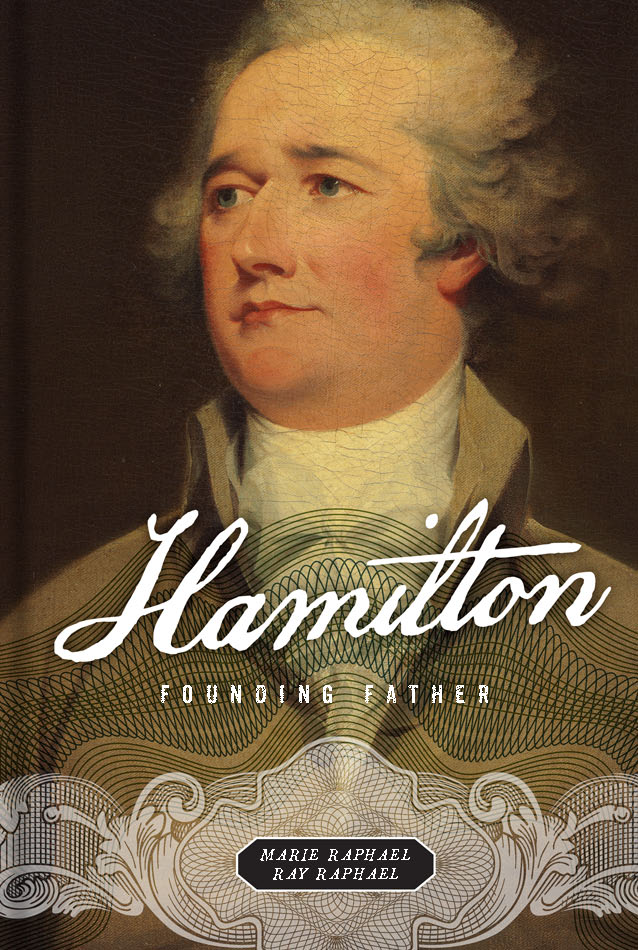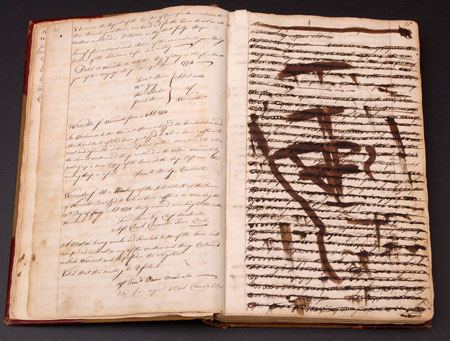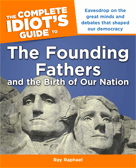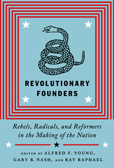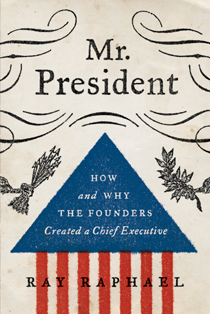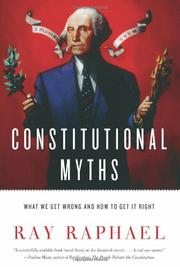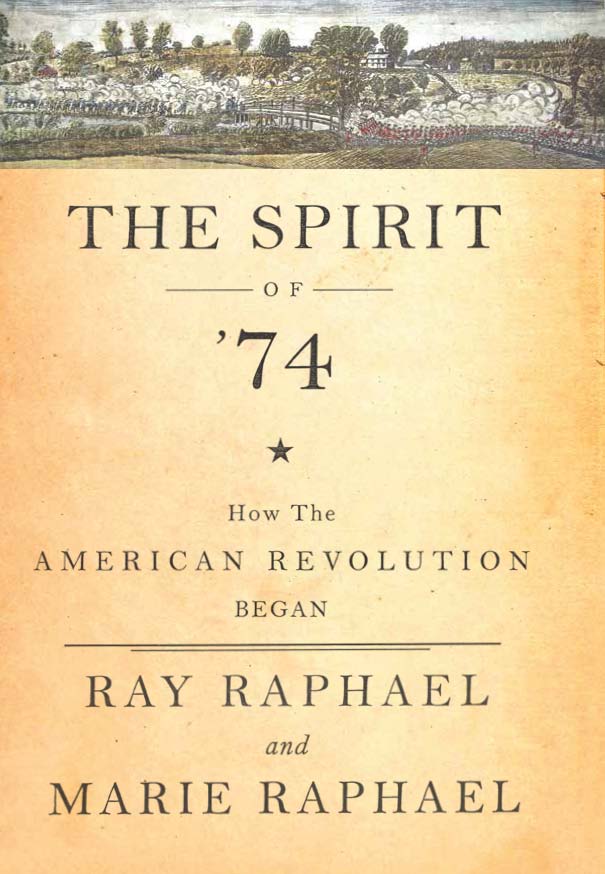

 |
 |
 |
RECENT RELEASES
New to the site: |
Bay State Legacy Award, 2013 – Massachusetts Humanities Council
Ray turns history upside down, as you all know by now.
He challenges us to re-assess what we had accepted as fact – to root out the myths, to account for vagaries of memory, and the biases of participants and chroniclers throughout time.
read more...
Books on the American Revolution and the Founding Era:
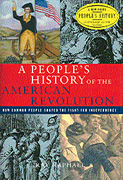 |
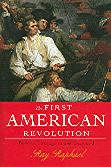 |
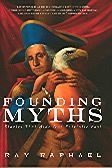 |
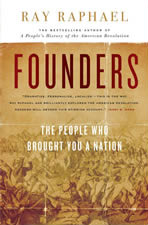 |
|||||
|
||||||||
Our country’s beginnings were chaotic and confusing, just as the present is. Inspirational stories of the birth of the nation tidy up that mess by featuring heroes and heroines, clear plotlines, and happy endings. Many were invented in the nineteenth century to serve the interests of an expansive nationalism, but we cling to them today because they honor America in steadfast ways.
Revolutionary Era historians must look past these simplifications and distortions to discover what really happened in those formative years, when our nation was being defined. To do so, we try to place personal bias aside and treat events only in context, with minimal hindsight. This is no easy feat. “The past is a foreign country,” wrote novelist L. P. Hartley. “They do things differently there.”
Twenty years ago Ray Raphael entered the world of Revolutionary America and he has never fully returned. He has examined a massive number of primary source documents from those times (see Documents), discarding later histories when need be, and his several books on the subject (see Booklist and Works in Progress) take readers on expeditions few have taken before.
Here in brief is his journey:
In his critically acclaimed People’s History of the American Revolution (2001), the inaugural volume of Howard Zinn’s “People’s History Series,” Raphael highlights the experiences of common people of the Revolutionary Era — farmers and farmwives, artisans and laborers, African Americans and Native Americans. This nation was founded not just by the handful of “Founding Fathers” we have come to revere, but also by the revolutionary activities of hundreds of thousands of patriots dedicated to the notion that all government must be firmly rooted in “the body of the people,” as they said at the time. “Ray Raphael has probably altered the way in which future historians will see events,” wrote the London Sunday Times. “His narrative is a tour de force.”
The First American Revolution (2002) presents a close-up of one dramatic episode uncovered during the research for People's History: the forcible overthrow of British authority in 1774, staged by tens of thousands of common farmers throughout Massachusetts the year before Lexington and Concord. This bloodless uprising, the most successful in the nation’s history, ended British rule in all of Massachusetts outside of Boston, and it changes the way we look at the American Revolution. When Redcoats marched on Lexington and Concord the following spring, they started the war, but the real revolution – the military and political transfer of power – had already occurred. In April 1775 British forces were attempting a counter-revolution to reclaim a countryside they had already lost. Primary sources uncovered during the research for this book are reproduced for teaching purposes on the Documents page.
Why is the first transfer of political and military authority never featured, and rarely even mentioned, in our national narrative? Who is the gatekeeper for the stories we tell? Founding Myths: Stories that Hide our Patriotic Past (2004) explores the intriguing intersection between history-making and story-making, detailing how and why our most cherished tales were invented in the nineteenth century and asking the critical question: why do we continue to tell them now? By deconstructing thirteen stories such as Paul Revere’s Ride, the “Shot Heard Round the World,” the winter at Valley Forge, and “Give me liberty or give me death,” Raphael shows how distortions that still anchor our core narrative hide a rich history that is far more deserving of celebration.
While narrative demands often lead to distortions of history, good history and good stories are not mutually exclusive. Founders: The People Who Brought You a Nation (2009) is a sweeping narrative that starts with the unrest in 1761 and ends with the ratification of the Bill of Rights thirty years later. Raphael focuses on seven lead characters, moving back and forth between leading figures “inside chambers” and the people “out-of-doors.” We follow George Washington but also Joseph Plumb Martin, a private in Washington’s army. The pragmatic Robert Morris, the Founding Era’s richest merchant who rescued the young nation from bankruptcy, goes head to head with Thomas Young, a peripatetic revolutionary who fomented rebellion in seven states. Rounding out the leading cast are Timothy Bigelow, a common blacksmith from the heartland of Massachusetts who helped topple British rule the year before Lexington and Concord; Henry Laurens, a conservative slave owner from South Carolina, along with his son John, who devised a scheme to free slaves in return for military service; and the idealistic Mercy Otis Warren, the most politically engaged American woman of her time. These proactive historical agents represent contrasting yet complementary outlooks and ideologies, classes and occupations, and regional interests. Taken together, they form the basis for a more complete and compelling rendition of our nation’s founding than could ever be achieved by focusing on the usual, more cohesive group of actors. In the words of noted historian Gary B. Nash, Director of the National Center for History in the Schools, Raphael “teaches us more about the multiple dimensions of the American Revolution than one could ever have imagined.” (Read the Introduction.)
Raphael's first four books on the nation's founding are linked, each one leading to the next. Now he is taking diverse paths, as seen by the books below.
In Revolutionary Founders: Rebels, Radicals, and Reformers in the Making of the Nation (2011), Alfred F. Young, Gary B. Nash, and Ray Raphael gather twenty-two original biographical essays from top scholars in the field. As Eric Foner explains in the afterword, “The essays in Revolutionary Founders go a long way toward illuminating the upsurge of egalitarian sentiment that threw into question not only monarchical rule but inequalities of every sort, making it central to our understanding of that turbulent era. They bring to life a remarkable cast of characters—ordinary Americans who helped to shape the dual struggles for American independence and over what kind of society an independent United States was to be.”
Though the book’s language is accessible to a popular audience and its stories are entertaining, The Complete Idiot’s Guide to the Founding Fathers and the Birth of Our Nation (2011) delivers deeply researched and up-to-date scholarship. Raphael leads readers on a fast-paced tour of the Founding Era, from the beginnings of Revolutionary unrest in the 1760s through Jefferson’s administration in the early 1800s. He makes the issues of those times current by discussing the powers of Congress and the President, judicial review, religion and the state, the second amendment, and other topics that stir interest and argument today. “Despite the silly title,” writes Woody Holton, whose Unruly Americans and the Origins of the Constitution was a National Book Award finalist, “Ray Raphael’s book is a thorough and sophisticated synthesis of all the cutting-edge scholarship on the American Revolution. I learned a lot from it, and I think other specialists in the founding era will, too.”
In Mr. President: How and Why the Founders Created a Chief Executive, Raphael examines the origins of the most powerful office in the world. Fearful of monarchical tyranny, the framers sought to create an executive office that would make government more efficient without commandeering power or oppressing citizens. How could they do this? Following the Constitutional Convention’s dynamics, Mr. President reveals how delegates cobbled together a lasting institution. We see the flamboyant, peg-legged hero of the story, Gouverneur Morris, using bluster and savvy to bequeath to us his vision of an independent presidency. We see how the presidency evolved during the first three presidential administrations. And we see a trajectory set in motion that has resulted, in our own time, in an office that is more sweeping, more powerful, and more inherently partisan than the framers ever intended.
Concerned with the misapplications of casual history for political purposes, Raphael undertook to set the historical record straight with Constitutional Myths: What We Get Wrong and How to Get It Right. Americans of late have taken to waving the Constitution in the air and proclaiming, “The founders were on MY side! See, it’s all right here!” But these phantom constitutions bear little relation to the historical one. Before we can consider what the framers would do if they were alive today, we need to see what they did in their own time, not in our terms, but theirs. Only then can we begin to resolve the sweeping question: what does the Constitution, written in a different era, mean for us today? Constitutional Myths, meticulously researched, sounds the call for reasoned, evidence-driven discussions and interpretations of our founding document.
In The Spirit of '74: How the American Revolution Began, Ray and Marie Raphael chronicle what they call "the missing sixteen months" between the Boston Tea Party in December 1773 and the British march on Lexington and Concord in April 1775. They demonstrate that without a thorough examination of the dramatic events during that period, we cannot possibly understand why British officials ordered the expedition that sparked "the shot heard round the world." The First American Revolution chronicled the dramatic Massachusetts Revolution of 1774; here, the Raphaels place that event firmly in the mainstream narrative of the American Revolution by detailing the military preparations triggered by this revolution—and, step-by-step, how these led to the outbreak of war.
©2004 Ray Raphael
